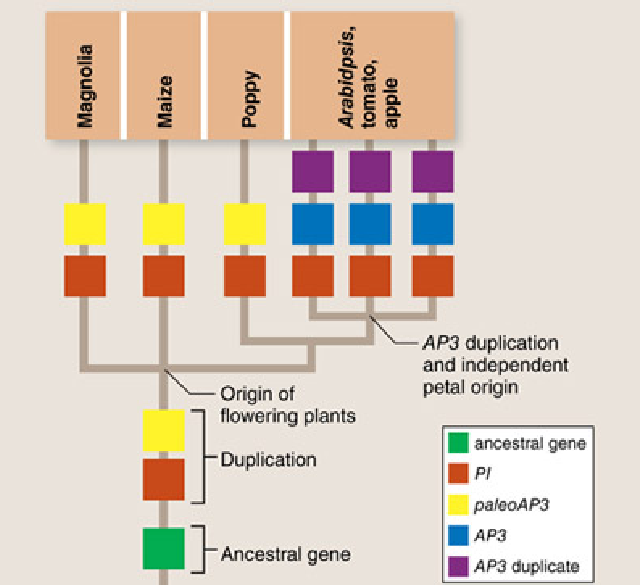What may be a new source that could replace embryonic stem cells for therapeutic purposes?
What will be an ideal response?
A new source is induced pluripotent stem cells (IPSCs).
Adult cells have successfully been treated/reprogrammed to behave as embryonic stem cells.
You might also like to view...
Use the figure shown, and what you learned from the text, to choose the true statements about the evolution of flower development. Arabidopsis, tomato, and apple are the eudicots. (choose all that apply)

_____ PI evolved before the most recent common ancestor of all flowering plants.
_____ The eudicots do not have stamens.
_____ PaleoAP3 controls petal development in the eudicots.
_____ With the duplication of paleoAP3, AP3 gained a role in stamen development.
_____ AP3 with a role in petal development is a shared derived character of eudicots.
Clarify Question
· What is the key concept addressed by the question?
· What type of thinking is required?
· What key words does the question contain and what do they mean?
Gather Content
· What do you already know about the evolution of flower development genes?
Consider Possibilities
· Consider the different answer options. Which can you rule out?
Choose Answer
· Given what you now know, what information and/or problem solving approach is most likely to produce the correct answer?
Reflect on Process
· Did your problem-solving process lead you to the correct answer? If not, where did the process break down or lead you astray? How can you revise your approach to produce a more desirable result?
To express a gene, DNA is first transcribed into a corresponding strand of
A) mtDNA. B) rRNA. C) mRNA. D) tRNA.
Which acid is a severe air pollutant?
1.primary producer 2.primary consumer 3.secondary consumer 4.tertiary consumer
The figure below is depicting the interaction of water molecules with one another, which involves the use of
a. covalent bonds. b. hydrogen bonds. c. ionic bonds. d. positive and negative ions.